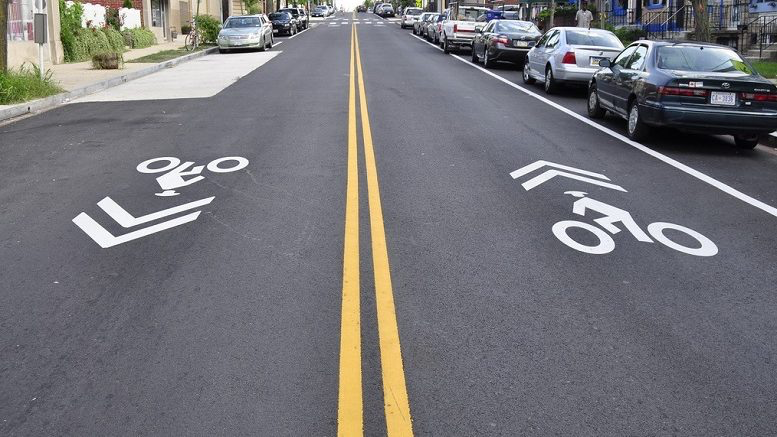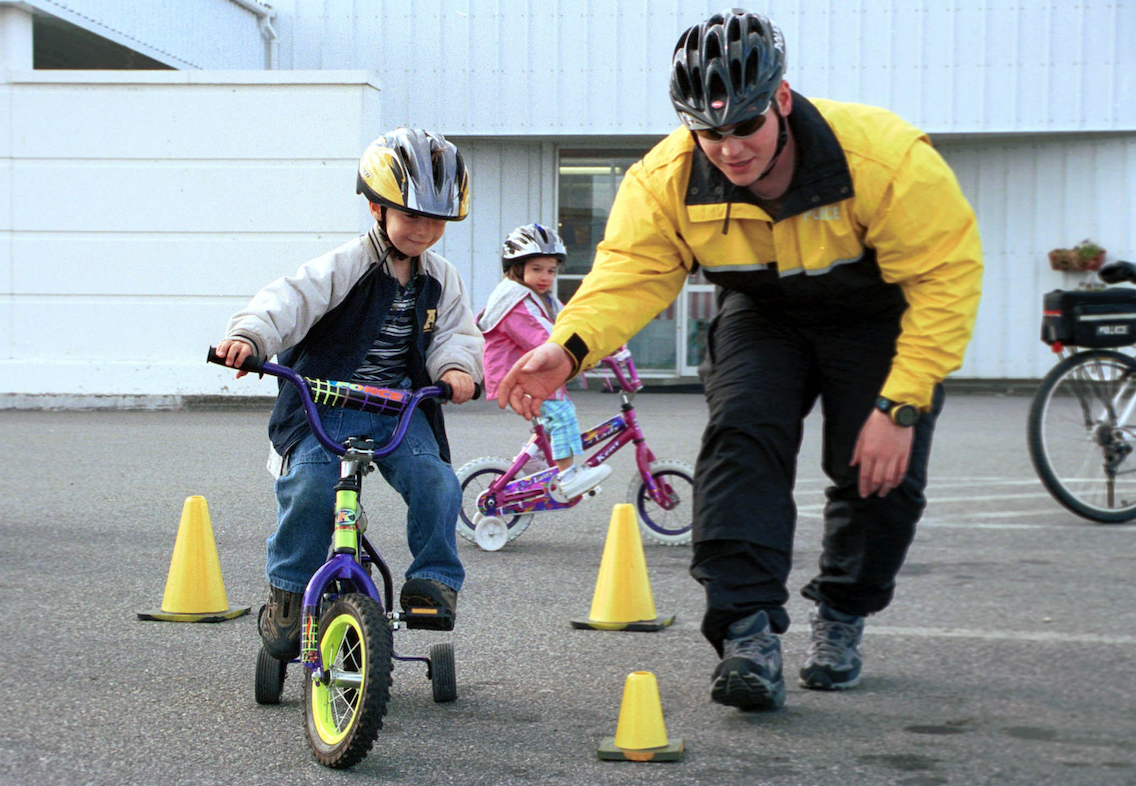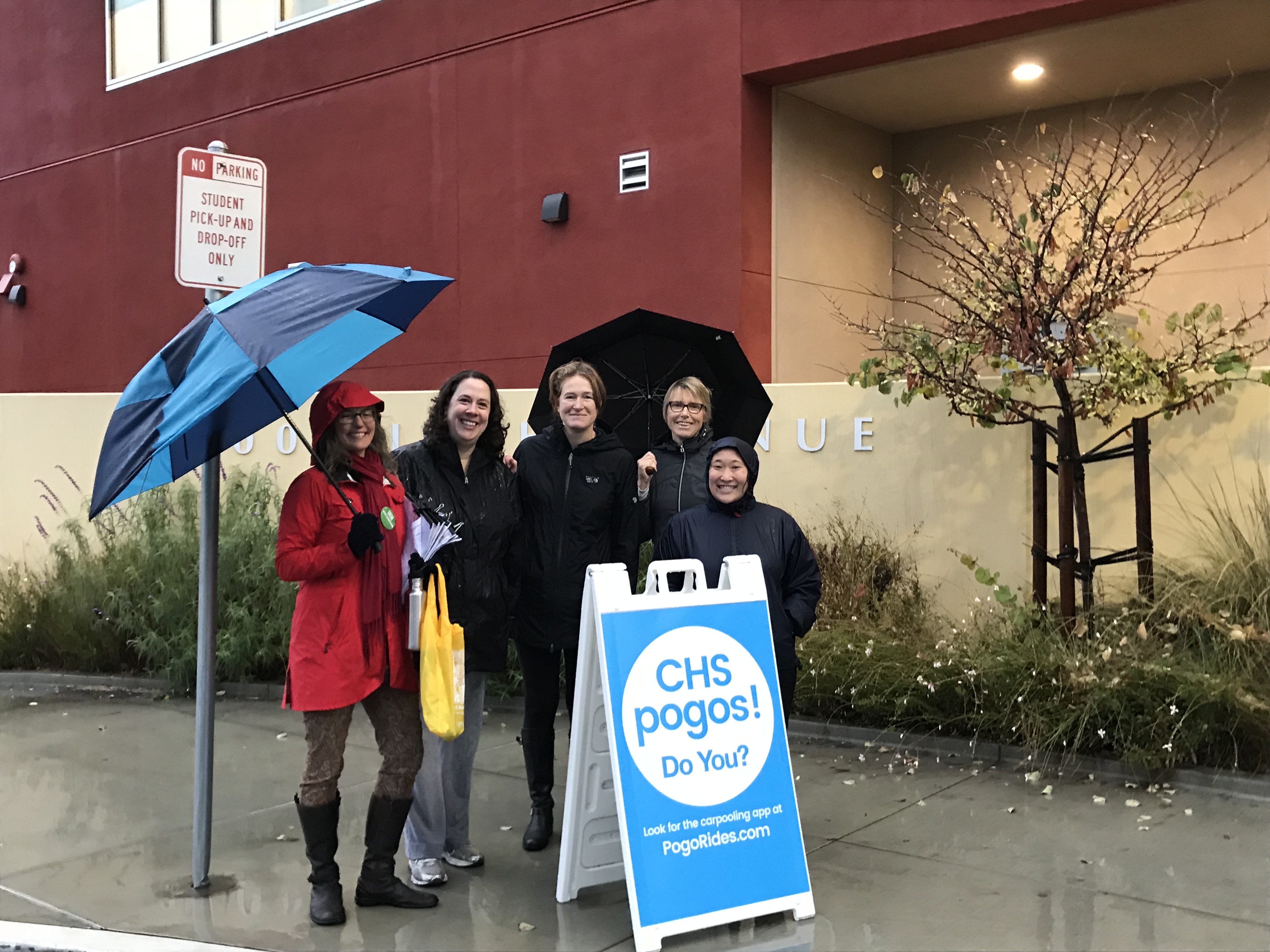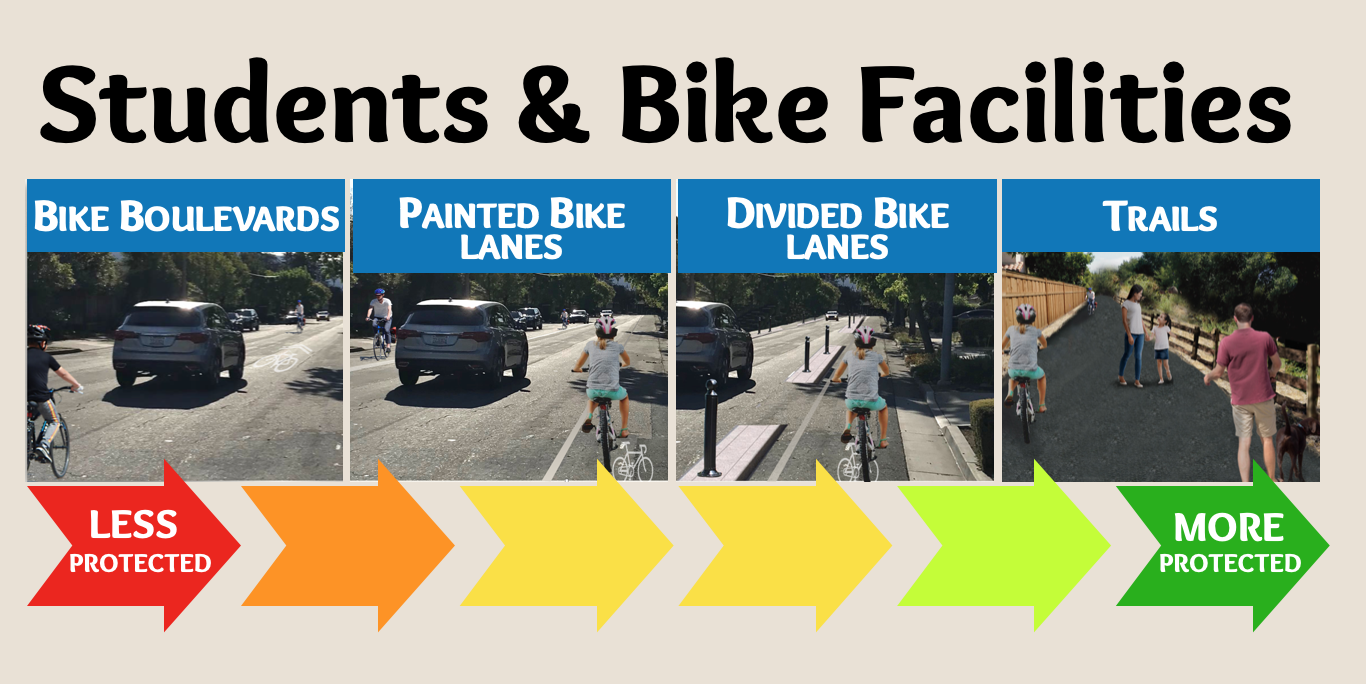Recently, it has been said that Bike Boulevards should be prioritized ahead of all other Cupertino bicycle and pedestrian projects, because they will improve safety for students traveling to school and encourage more school commutes by bike. At the July 16, 2019 City Council meeting Vice-Mayor Chao stated, “Bike Boulevards have to be higher priority than any other project.”
Bike Boulevards only add painted sharrows, directional signage and sometimes speed tables (bumps) to the existing road. It is unlikely that parents that do not feel comfortable sending their children to school by bike today will feel they are safer when their children must continue to share the drive lane with cars.
What is a ‘Bike Boulevard’?

Bike Boulevards are Class 3 Bike Facilities, one of the four designations of Bike Facilities (see this article for more information on the different classes). They do not have a painted or divided bike lane but have sharrow markings and sometimes traffic calming speed tables (bumps). It offers the least protection for cyclists of all facilities, and are best for the experienced/commuter cyclist.
Sharrows, which are easy and inexpensive for cities to paint, unfortunately don’t do anything to improve safety or encourage cycling. A 2016 study by University of Colorado Denver researchers Nick Ferenchak and Wesley Marshall examined safety outcomes for areas in Chicago that received bike lanes, sharrows, and no bicycling street treatments at all.
They found that bike lanes encourage more people to bike and make biking safer, while sharrows don’t do much of either.
Where bike lanes were installed, injuries decreased 42 percent; in the sharrows vs areas with no changes, the difference was not statistically significant. The article’s author hypothesizes that, “this difference in injury rate is a result of the perceived but false safety of sharrows”—in other words, the painted sharrows make cyclists think they are safer, but there is no actual increase in safety.
What are the benefits of Bike Boulevards, if they aren’t better for students?
Bike Boulevards have some tangible benefits:
- Speed tables can quiet neighborhood traffic pass-by noise and reduce injury severity during crashes by slowing traffic;
- Speed tables can reduce some cut-through traffic on non-school (i.e. not required) routes;
- Signage can encourage travel to local destinations and provide route guidance to cyclists;
- Crossing improvements such as raised crosswalks can improve problematic intersections (pedestrian improvements comprise the majority of the cost of Cupertino’s “Bike” Boulevards);
- As they are listed as “Class III bike facilities” under California law, they can boost the “bike friendliness” rating of a city for very little money.
Bike Boulevards should be a part of the toolbox for every city, but not used as a way to improve safety for students or increase numbers of students biking to school.
What does work for helping students get to school safely?
There are three things that can make parents and students cycle more to school, and also have been confirmed to be safer than both no changes and Bike Boulevards:
- Improved education (does my child know how to bike safely, what to expect from cars, and the rules of the road);
- Bicycle projects that provide clear safety and security for students, such as Class IV physically divided bike lanes, or off-street trails including Class I trails (Class II painted-stripe bike lanes also offer some improvement);
- Spot projects at schools to get bikes off the street, such as specific off-street paths just for bikes, where the greatest conflicts between large numbers of student cyclists and (parent) vehicles occur.
Student Pedestrian and Bicycling Education
Student education, starting at early ages with pedestrian education and then advancing to bike education as they finish elementary school, has been shown to increase both numbers of students cycling to school as well as improve safety for those students. Some other local municipalities have bike education as part of the regular physical education classes; Cupertino has more of an ad-hoc approach, with only assemblies and rodeos in schools and out-of-school bike workshops for middle schoolers as there has been resistance by our school districts to add bike and pedestrian education to the PE programs. Almost all of the available programs for our students are optional, with some being fee-based. Attendance varies widely. The local municipalities that have a focused and consistent education for their students see much higher rates of walking or biking to school. As more students bike, more cars are watching for bikes (and they are more visible), so fewer accidents occur and traffic is decreased, which encourages more students to bike.

Student-Focused Biking Infrastructure
Students tend to be the least experienced of cyclists, which can mean—much like new drivers—they are less able to anticipate and avoid threatening situations.
For on-street biking infrastructure, Class IV physically Bike lanes are best, such as on McClellan Road. Not only do they safely separate cyclists from vehicles, but they also do not allow cars to park in the bike lane.
Where possible, trails increase safety and encourage active commutes even more. These trails—which can be to a full “Class I” standard with wide widths, shoulders, etc. or a less expensive, fewer ‘frills’ trail that is still usable for walking and biking students—are excellent, safe commute routes. They have the same benefits as Class IV lanes but are also available to pedestrians. Even better is that they do not have driveways cutting through them and are in general a much quieter, shadier and more pleasant travel space.
Class II Bike lanes, which are a painted stripe along the side of the street, add a designated space for cyclists. Though not providing any actual physical safety, they can be a visible reminder to motorists to leave that space for cyclists. To be fully effective, Class II painted bike lanes should not allow stopping or parking inside the lane and should have green paint in them where high visibility is most necessary, such as near intersections.
School On-the-Spot Projects
Each school has different conditions, including: road architecture; traffic flow; numbers of students living very close to the school (fewer for high schools, and increasing for middle and elementary schools); parent, student and school culture (such as how active is the Safe Routes to School group or whether friends bike together); and perception of walking and biking safety by students and parents. Spot projects can address the issues at each particular school in the manner best for that school. These projects can include:
- Infrastructure such as bike lanes or intersection bollards specifically designed to help students on the school property nearby on adjacent streets/sidewalks;
- Encouragement of parent groups for student cyclists for advice, encouragement and support;
- Educational or encouragement campaigns for students to bike to school; and
- On-street workshops near the school or locally so parents and students feel more comfortable with the experience of biking to school.
These can be, and usually are, integrated with similar projects for student pedestrians.


The information expressed in this post are solely the opinions of the author and Walk-Bike Cupertino, and do not reflect the opinions of any other organization, including the City of Cupertino or its commissions.
